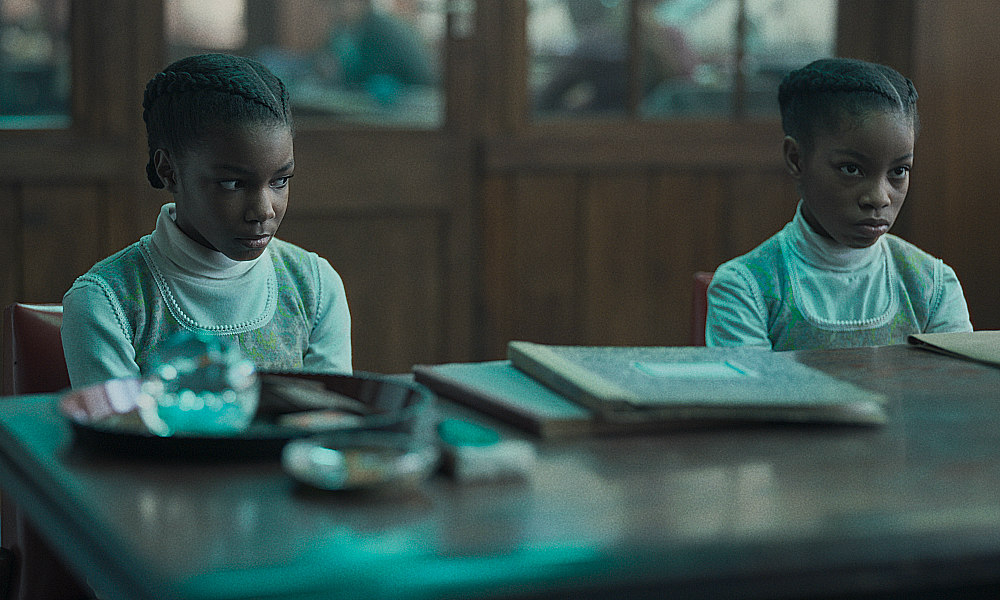The movie theater business is a bit stagnant at the moment. It happens every year at the end of summer and it is more difficult this year. COVID is still around and big movies take time to arrive. That’s what I read everywhere, but this week’s movies can’t stand sadness. Look at the good grades I’ve given these…
The King Woman: 4 stars
The silent twins: 3
Pearl: 3 ½
Moon Age Reverie: 4
If you’re not going out, take a look at the Lord of the Rings Series on Prime Video. This is going very well. Three episodes are already available, the fourth will be later today (Friday) and although the story is not that clear, the individual sequences are exciting and the special effects and all the visuals are top notch. They really belong on the big screen.
And now back to our usual program:
what people are reading

THE WOMAN KING: There are several ways to approach this, they are all worthwhile. Like an action movie, for example. It has a lot of that, although too much voiced speech may slow things down. Better: a history lesson on Africa. We don’t have many in the movies about the people who lived there. Usually we get the stories from the settlers. Here we learn about Dahomey, which is now known as Benin. In the 1820s it was powerful, defended by a fierce army of women warriors, fighting wars with its neighbors and fending off slave traders. At that point he had an ambiguous position: he was only willing to sell to merchants the enemies he captured. The morality of even that trade is an important issue. There are others: the resistance to arranged marriages, the rights of men and the low status of women. modern ideas. But the story co-written by Maria Bello and directed by Gina Prince-Bythewood finds them debated back then.

And the power of women is abundantly shown. The warriors, known as Agojie, with their imposing leader (Viola Davis), train and fight, armed only with swords against rifles. A new recruit (played by Porthuso Mbedu) becomes key in several ways. He rejected an arranged marriage, suggests alternatives to the slave trade and even talks back to leading him. There’s more to that, then we find out. Meanwhile, he also has an almost love interest in a young slaver (Jordan Bolger) who happens to be half Dahomey, half Portuguese. That may be there to toy with moviegoers, but he feels out of place. There is enough more to this movie to keep you engaged. (In theaters) 4 of 5
THE SILENT TWINS: They are teenagers and feel so alienated from society that they stop talking to anyone except each other. In that relationship workshop they create a rich fantasy world of fictional characters, bizarre stories, and writing that they hope will interest a publisher. Their parents cannot communicate with them. The school doesn’t know what to do with them and sends them to a special school for difficult teenagers. They get more out of a creative writing correspondence course. When they get a typewriter, they are beaming. “Now we are writers,” says one. They are twins and they look exactly alike. But eventually they will compete trying to get a book published.

The story is true. June and Jennifer Gibbons came with their parents from Barbados to Wales in the 1970s. There has been a TV series, a play and a memoir and a London Times reporter wrote about them, inquired about the film and is represented by a character in it. The girls are skillfully and affectionately played by Letitia Wright and Tamara Lawrance, who have experience in film acting. They speak a bit of wisdom from time to time (“You’ll never find joy if you want to be alone”). Here’s another: “I am immune to sanity or madness.” Those and more are obtained from the notes that the girls wrote or from the writings that they completed. It is not clear why they were. Racism is mentioned but not definitively. What we have here is not the complete answer, but a fascinating story directed by the Polish Agnieszka Smoczyńska. (In theaters) 3 of 5
PEARL: You don’t have to have seen the movie this is a prequel to. For one, that movie, X, is set many years in the future and you don’t have to know what Pearl ultimately became. You can see this as a completely standalone movie and deeply emphasize with the frustrated dreams of a young woman. Mia Goth, as Pearl, lives on a farm with a disabled father, she has to feed and clean him in her wheelchair, and her mother (Tandi Wright) who constantly nags at her. It is difficult for German farmers to be accepted in Texas, he continues, since World War I has just ended. It’s 1918, the flu pandemic is underway, and the characters often wear masks.

Mom’s biggest complaint is about Pearl’s desire to become a ballerina like she sees in the movies. It’s a childish fantasy, she yells at her, but it’s also an escape. She takes Pearl to meet the projectionist (David Corenswet) at the local theater. He is always ready to see her, he sleeps with her and shows her a porn movie. She better get out of this too and a friend (Emma Jenkins-Purro) has a way. A church plans to put on a show to raise funds and needs young dancers. Exactly what Pearl is looking for. The two go to the audition and… well… expect surprises and a mixed ending. It’s not like the horror movie that will follow. It’s a carefully constructed atmosphere of dread, unsettling tension and a young woman’s grip on reality. It is a very good movie. (In theaters) 3 ½ of 5
THE DREAM OF THE MOON: There’s your usual documentary about a musician. Talking heads, friends, fans, critics and some words from the artist himself. An overview of a race. Not so with Brett Morgen’s look at Davie Bowie. It is as fickle as he is, impressionistic and kaleidiscopic. You get a glimpse of the man and his thoughts, but facts? Not that much. You do get a lot of music though; many of his best-known songs were neatly remixed for this film by music producer Tony Viconti. It’s sure to be exciting on the big screen, including IMAX for which the music was optimized.

As for a portrait of the artist, it comes from him alone, from old clips and interviews, notably with one by Dick Cavett. Bowie isn’t particularly forthcoming, although he does talk about taking chances from time to time to bring new influences to his music. And this view of life: don’t waste a day. In one clip, he talks about being a Buddhist on Tuesday and Nietzsche on Friday. Actually, we don’t get much news about his artistic methods. But there is the music. He must have videotaped almost every concert he did because we have a sizable sample, occasionally entire songs, from giant venues. Morgen does a great job of editing, moving seamlessly between these formats, adding home movies that Bowie provided, and cutting film clips more flashily. Some are from his own movies, most are classics, The Cabinet of Dr. Caligari, Metropolis, 2001, Blade Runner and many others. That may sound chaotic, but it reflects the frequent changes his art underwent. This movie is a joyous appreciation that fans, in particular, will like. (In theaters) 4 of 5
